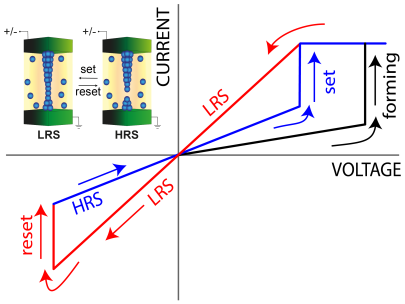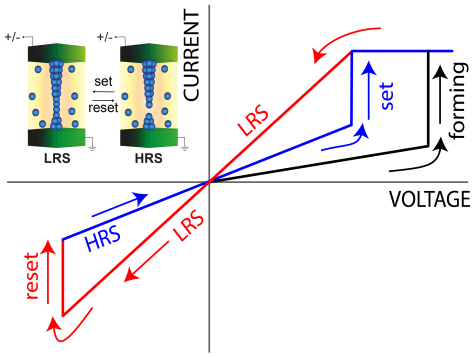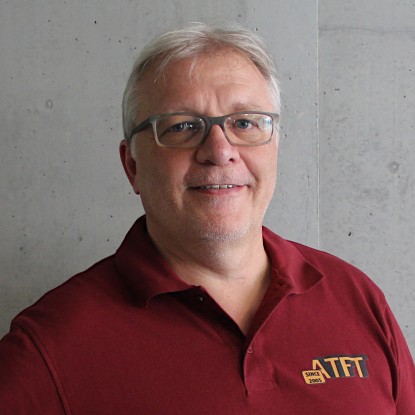Structural and electrical characterization of transition metal oxide-based memristors
Bachelor Thesis, Advanced Research Lab, Master Thesis
Memristive devices, i.e. resistors with a memory, have gained increased research interest in the past decades as potential non-volatile memory candidates as well as artificial synapses in the field of neuromorphic computing. These devices are expected to solve the current problems of scaling and performance that are present in state of the art memory technologies. Among memristors, Resistive Random Access Memory (RRAM) is of particular interest due to its simplicity, high speed, excellent scalability and potential for 3D stacking.
An oxide based RRAM device typically consists of an insulator (e.g. HfO2, Y2O3) embedded between two metal electrodes (MIM-stack). The binary information stored in RRAM devices is based on their resistance states. One can distinguish between a high resistance and a low resistance state (HRS and LRS) of the device, which can be set by applying a defined voltage in the appropriate direction. The underlying mechanism is based on the repeatable formation and rupture of a conductive filament (oxygen vacancy filament in OxRAM or metal filament, e.g. a Cu filament, in CBRAM). At the Advanced Thin Film Technology group, a reactive molecular beam epitaxy (MBE) setup is used to prepare the films.
The main goal of this work is the structural and electrical characterization of transition metal oxide-based devices.
Depending on the specific subtopic your work might include:
• XRD, XRR and/or XPS characterization of the grown layers,
• Complete electrical characterization including the investigation of Pristine resistance, Electroforming, DC Cycling and/or Pulse measurements.
Further, the work may include the use of spin coating, a mask aligner in a clean room environment, DC Sputtering of electrodes and the use of an Ion Beam Etching system for structuring the RRAM devices.
For details on the currently available projects contact Prof. Dr. Lambert Alff lambert.alff@tu-…




